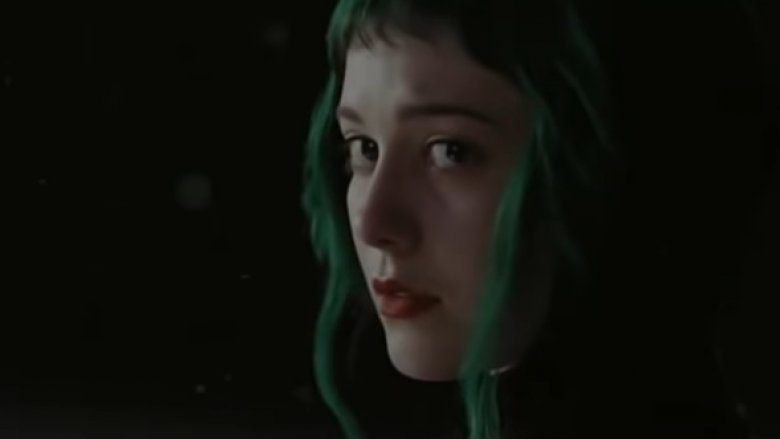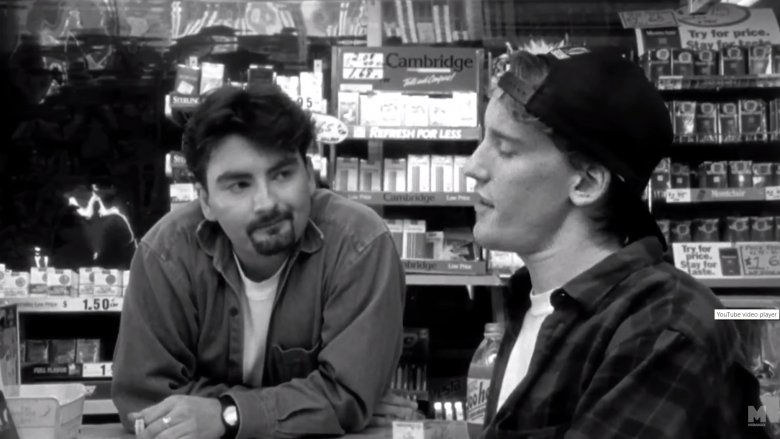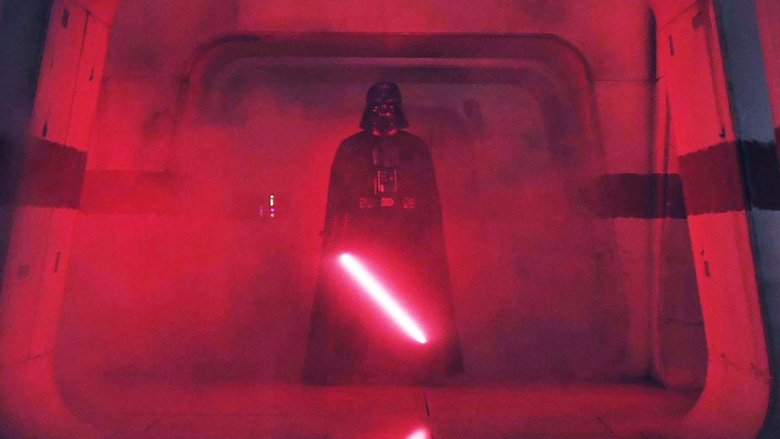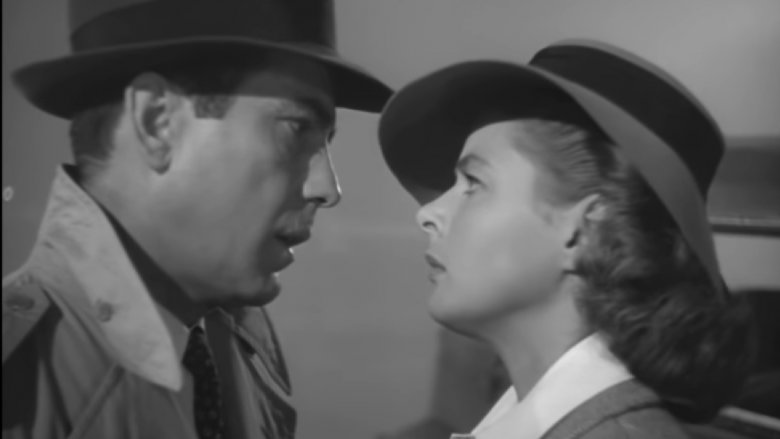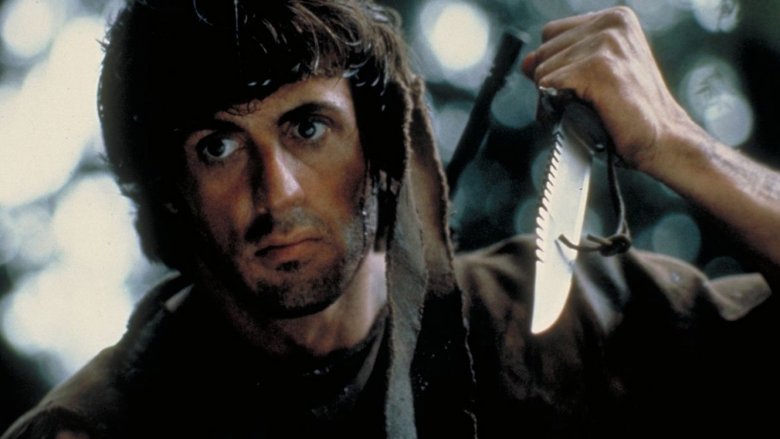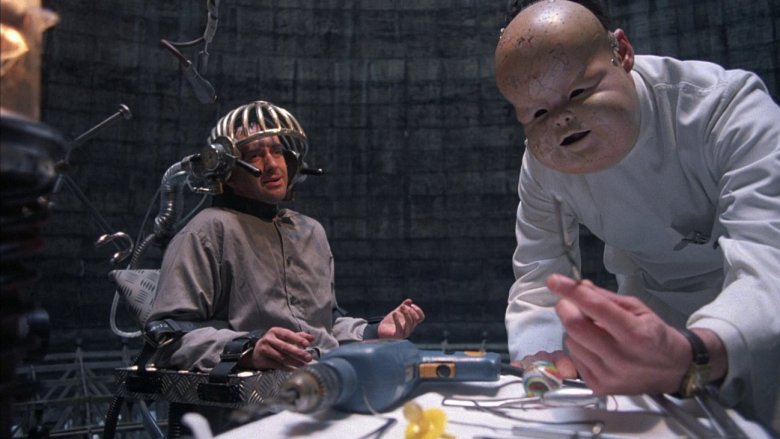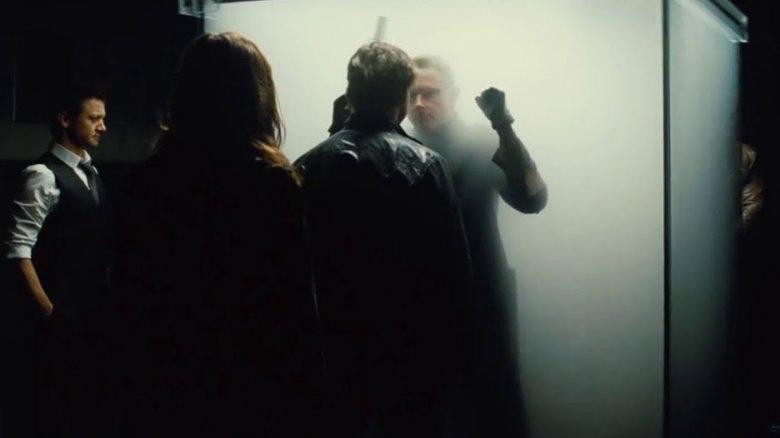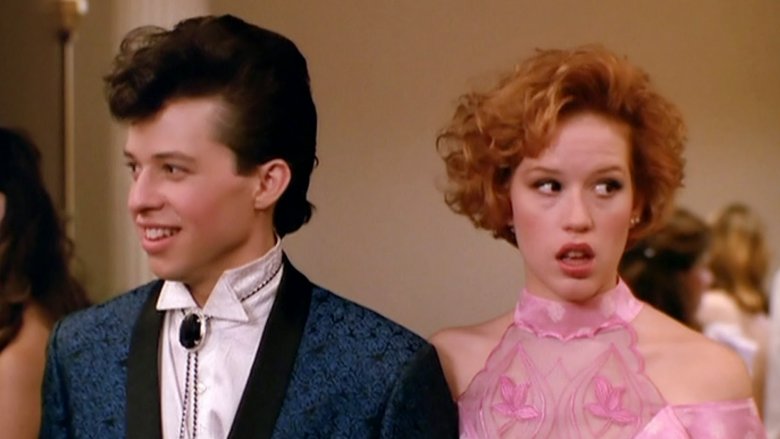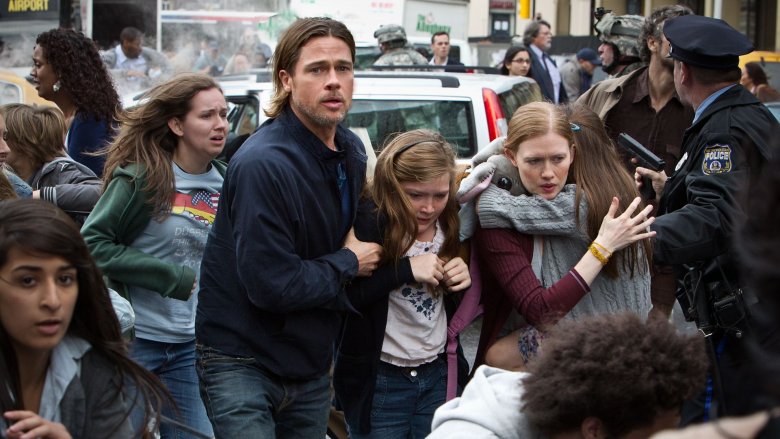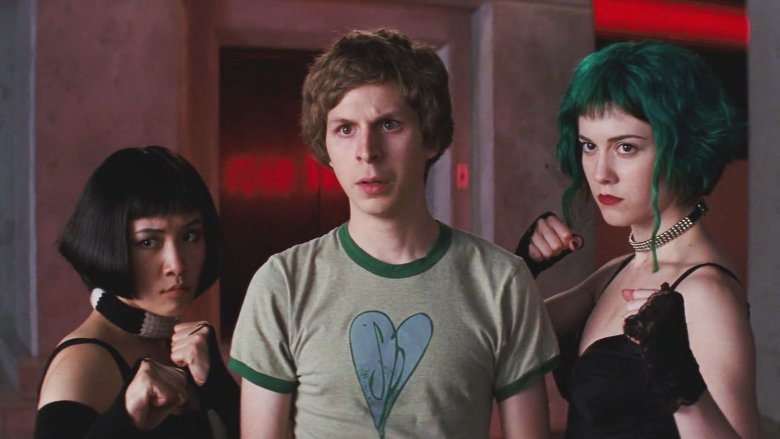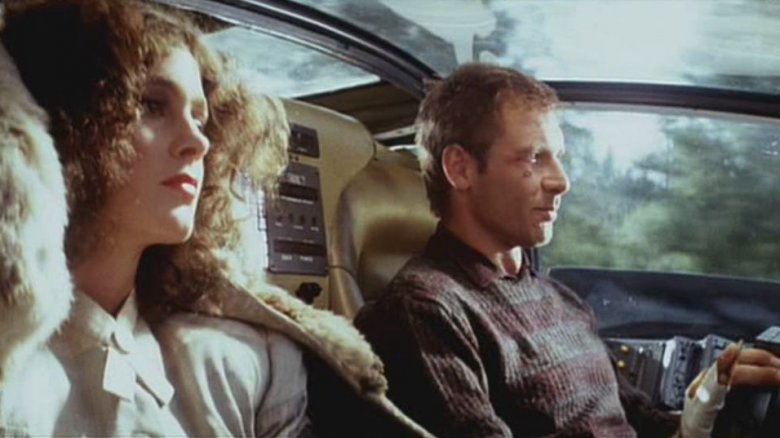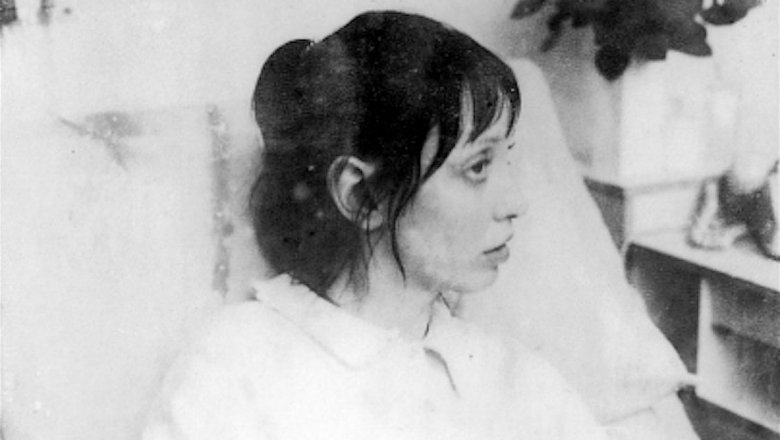Movies That Changed The Ending At The Last Minute
We may receive a commission on purchases made from links.
When telling a story, it's generally a good idea to know where you're ending before you begin. This is true of all stories, even if you're just telling a friend about your day. But this is especially true in film, where a bad story wastes a whole lot more than just time. Film is an obscenely expensive medium to work in. Unlike writing a novel or drawing a comic book, making a movie often requires hundreds of people and millions of dollars. Because of this, it's a good idea to plan out everything long before the cameras start rolling.
Most films are able to pull this off, but every once in a while, something goes terribly wrong. Perhaps the director has a sudden realization halfway through filming that something about the ending doesn't work. Maybe they get last minute feedback from the studio or producers. Or worst of all, perhaps the film does not please the dreaded test audiences. For one reason or another, these movies had to have massive (and sometimes expensive) changes to their ending long after they should have had everything worked out. Some of these productions still managed to use editing and reshoots to find their happy ending, but others ended with a tragic twist that no one saw coming.
Clerks
The classic 90's slacker comedy Clerks tells the story of a day in the life of sad sack convenience store clerk Dante Hicks. Even though the film garnered critical acclaim, jump-started the career of director Kevin Smith, and introduced the world to Jay and Silent Bob, the original ending told a drastically different story.
In its first public screening at the Independent Feature Film Market, Clerks ended with one last customer entering the store as Dante was closing up for the night. He was an armed robber who, without warning or fanfare, shot Dante dead, emptied the till, and walked away. Talk about a dead end job.
In the making-of documentary Snowball Effect: The Story of Clerks, Smith admits that he did this because he didn't know how else to close the film, and because he was copying the structure of Spike Lee's Do the Right Thing, which also takes place entirely in one day and ends in tragedy. Brian O'Halloran, the actor who played Dante, hated this ending, as did Smith's mentor, filmmaker John Pierson. Pierson suggested simply cutting that scene and ending on the happy note that preceded it.
That's exactly what Smith did, and so all future screenings ended in a way that better fit the tone of the rest of the film, and left the door open for a sequel. Fortunately, this ended up being a free change on an already inexpensive movie. This is not the case for some of our other examples.
Rogue One
Rogue One: A Star Wars Story was a project that was constantly shifting around during all stages of its production. There was an early version of the script where protagonist Jyn Erso was a Sergeant, an enlisted soldier in the Rebel Alliance, instead of a criminal who was pressured into joining the rebellion. In some versions of the script, she and Cassian actually survived the battle on Scarif. This incarnation of Jyn was the one that the filmmakers thought they would be going with when much of the merchandise was created. Because of that, some of the packaging for the toys still refers to Jyn as Sergeant Jyn Erso.
However, there was another key change to the ending that was made very late into the filming process. While looking over the footage they had filmed for the climax, director Gareth Edwards and editor Jabez Olssen realized that Darth Vader, despite being introduced in an early scene, never really got a chance to do anything cool in the third act. They decided he needed an action scene of his own, and so the now-iconic Darth Vader hallway fight scene was shot just four months before the film was released.
Casablanca
Casablanca is considered by many to be one of the greatest films of all time. What has stood the test of time most about it is how meticulously constructed it seems. Famous screenwriting gurus like Robert McKee often use it as a template for how to structure a story well. As part of his screenwriting seminar, McKee hosts a six-hour screening of Casablanca, where he pauses and analyzes the film as it goes, talking about its structure, scene by scene.
The actual screenwriting method employed by the writers of Casablanca, however, was nothing that McKee, or any screenwriting teacher, would ever advise. The film was shot in order, because it was being written as it was being filmed. Screenwriter Howard Koch said, "When we began... we didn't have an ending, so we didn't know what was going to happen!"
The decision of whether or not Rick would end up with Ilsa wasn't settled until the final few days of shooting, and the iconic last line of the film, "Louis, I think this is the beginning of a beautiful friendship," wasn't finalized until even later. It was dubbed in during editing, because when the scene was filmed, the filmmakers couldn't decide how to end it. Another possibility they were considering for a final line was, "Louis, I might have known you'd mix your patriotism with a little larceny."
Not a bad line, but far less quotable.
First Blood
The first film in the classic Rambo series, First Blood is surprisingly dark by the standards of action movies, but believe it or not, it was originally even darker. The original script for First Blood ended with Rambo, surrounded by police, attempting to goad Colonel Trautman into shooting him. When Trautman refused, Rambo grabbed his gun and pulled the trigger himself, choosing death over capture.
The film was intended to be a commentary on the terrible ways that veterans often continue to suffer in silence after coming home from war. The ending was supposed to mirror the unfortunate fate of many real-life veterans, which is to say, suicide.
Director Ted Kotcheff revealed during an interview with Entertainment Weekly that once filming began, both he and Sylvester Stallone realized that the rest of the film was already making the point clearly enough. As Stallone put it, "We put this character through so much. The police abuse him... He runs through freezing water. He's shot in the arm and he has to sew it up himself. All this, and now we're gonna kill him?"
They decided to shoot two different versions of the ending — one where Rambo lives, and one where he dies — and let test audiences decide which one they liked better. Needless to say, in the version of the film that eventually made it theaters, Rambo backs down at the last moment, collapsing into tears and letting the authorities take him into custody.
Brazil
As a filmmaker, Terry Gilliam is known for two things: making amazing, surreal movies and having terrible luck while trying to make amazing, surreal movies. The story of his 1985 film Brazil showcases both of these traits.
Brazil tells the story of Sam Lowry, who lives in a totalitarian futuristic bureaucracy but dreams of being a winged hero who fights monsters and rescues damsels. After a series of misadventures, Sam is captured by the authorities for associating with criminal revolutionaries. In the original ending, he seemingly breaks out of captivity and flees the city to an idyllic countryside. But then, there is a sudden reveal that he hasn't fled at all. He is still in prison, merely dreaming of escape after being lobotomized.
The Criterion documentary The Battle of Brazil tells the story of what happened next. Distributors felt that U.S. audiences would want a happier ending. Without Gilliam's permission or knowledge, another editing team created an alternate cut that ended with Sam actually escaping, excising the reveal that it was just a hallucination. This was the version of Brazil that originally premiered in the United States.
Fortunately, this is not the end of the story. Gilliam, unhappy with this result, starting hosting private screenings of his version of the film. His cut started getting positive critical attention, eventually winning the Los Angeles Film Critics Award for Best Picture. This made the studio finally cave and release the original version in to American audiences.
Mission: Impossible — Rogue Nation
When Sean Harris was cast in Mission: Impossible — Rogue Nation as the villainous Solomon Lane, he had only one request, without which he would not agree to do the film. He said, "Promise me you'll kill him... I don't want to be in five of these movies." Writer/director Christopher McQuarrie agreed. By the end of the film, protagonist Ethan Hunt would kill Solomon Lane.
The problem is that McQuarrie has been drifting into an unusual form of screenwriting with his recent films. Nowadays, his process begins not with a story, but with locations. First, McQuarrie has scouts bring him possible shooting locations that simply look cool, with no plan for how they'll be used. He chooses his favorites and roughs out a story that will take him from one location to the next. Then, McQuarrie writes the actual scenes during the filming process, trusting in his experience as a writer and feedback from his cast to guide his decisions.
Late into process of filming, McQuarrie made an upsetting discovery. He realized, "I don't have the event in the movie that makes me want Ethan to kill him." He felt it would be more satisfying if Ethan tricked Lane, defeating him without violence, and brought him into custody alive. After some pleading, McQuarrie eventually got Harris to agree to a script change. In the end, Harris, like his character, was trapped. It hasn't been five films yet, but Solomon Lane did indeed have to return in Mission: Impossible — Fallout.
Pretty in Pink
Pretty in Pink tells the story of Andie Walsh (Molly Ringwald), a highschooler caught between two love interests: preppy hunk Blaine (Andrew McCarthy), and boy next door Duckie (Jon Cryer). Originally, the plan was for Andie to learn that people who are rich and attractive (like Blaine) can sometimes be shallow, and people who don't look like much (like Duckie) are often the real treasure.
However, once filming began, Ringwald and McCarthy ended up having undeniable chemistry. Duckie, meanwhile, came off as a deeply weird dude with strange fashion sense, odd mannerisms, and an almost stalker-esque obsession with Andie.
The film was shot as originally written, with Andie ending up with Duckie, but audiences who were shown early cuts of the film just about lost their minds. As director Howard Deutch put it, "The girls in the test screening didn't go for that... they wanted her to get the cute boy. And that was it. So we had to reshoot the ending." The final version of the film did indeed have Andie ending up with Blaine, but the change happened so late into the process that the novelization of the film still has the original ending.
This change never sat well with writer John Hughes. Wanting another chance to properly execute this story, he wrote Some Kind of Wonderful, which has a very similar setup to Pretty in Pink, but this time ends with the lead choosing the normie over the hottie.
World War Z
When the initial trailer dropped for World War Z, audiences wanted to be excited, but many were apprehensive. If it didn't have a real heart, this nihilistic zombie killing fest might be too much to handle. The filmmakers felt the same way, because long after filming was supposed to have wrapped, World War Z underwent the largest rework of any entry on this list.
The initial ending, which was actually filmed, was an enormous and expensive action set piece, with protagonist Gerry Lane fighting his way through hundreds of zombies in Moscow's Red Square. However, when watching it back, the filmmakers felt that it just wasn't working. The story began with a strong focus on Gerry's desire to reunite with his family, but it ended with a meaningless bloodbath and no resolution to his main goal.
In an interview with Vanity Fair, second unit director Simon Crane said that the biggest problem was that "it wasn't character-driven anymore." Writer Damon Lindelof was brought on to take things back to the drawing board and do something that had never been done before on a film of this scale: write a completely new final 40 minutes to an already finished film.
In the version that hit theaters, the new climax is confined to an abandoned hospital. The action is small, with Gerry as a frightened everyman, rather than a swaggering badass. Most importantly, in the end, he finds his family.
Scott Pilgrim vs. the World
At the beginning of Scott Pilgrim vs. the World, the eponymous hero is caught between two women: his "too young for him" girlfriend Knives Chau and the mysterious Ramona Flowers. Early on in the film, he cheats on Knives with Ramona, and then breaks up with Knives altogether, but his new relationship with Ramona is far from smooth.
How does the story end? Well, when Edgar Wright and Michael Bacall were writing the script for Scott Pilgrim vs the World, they had a unique problem. It was based on a six-part comic series by Bryan Lee O'Malley, but only five of the six books had been released at the time. There was no ending for them to adapt.
The initial ending they penned had Scott realizing that Ramona wasn't right for him, and so he and Knives got back together. This ending was shot (and appears as a bonus feature on the Blu-Ray), but something about it didn't feel right during filming. In addition to test audiences not liking it, one of the loudest voices against it was Ellen Wong, the actor playing Knives, who didn't want her character going back a man who cheated on her.
In the final ending, despite their problems, Scott and Ramona decide that they're going to try to make it work, and Knives learns to stand on her own. This ended up matching the resolution of the comic series, the last volume of which was released less than a month before the film hit theaters.
Blade Runner
Even though Ridley Scott's Blade Runner is considered a classic nowadays, it was not always a favorite of sci fi cinephiles. When it premiered, reviews were lukewarm, and some last minute studio meddling may have been to blame.
In Scott's initial cut, the storytelling was gloomy and mysterious, especially the last shot of the film, which showed our protagonists on the run from the law, boarding an elevator to an uncertain fate. According to the making-of documentary On the Edge of Blade Runner, initial test screenings indicated that this highly ambiguous plot did its job a little too well, because everyone who saw it felt highly confused.
The studio pressured Scott to add not only a voiceover narration to make things clearer, but also a new ending that showed the heroes driving through the sunny countryside, indicating that (at least for now) they'd found some happiness. The production was out of money, but Scott was suddenly in need of some idyllic landscape footage. He turned to his friend, Stanley Kubrick, who happened to have 17 hours of beautiful unused b-roll that he originally shot for the opening titles of The Shining.
Despite everyone's best efforts, the fix ended up pleasing no one. Some still thought the movie was confusing, while others thought the new voiceover and ending were too corny. It wasn't until 1992 that Ridley Scott released a version of the film more in line with his initial vision, and lovers of confusing gloom finally got the flick they always wanted.
The Shining
Speaking of The Shining, what is the absolute latest time that a film could have its ending changed? How about a week after it came out? The initial ending of Stanley Kubrick's film featured an additional scene between the two now-famous final beats of Jack freezing to death in the hedge maze and the closing shot of that spooky group photo back in the Overlook. This diversion showed Wendy and Danny recovering in a hospital and talking to the police about what they experienced.
This scene was actually shown at the premiere and in the film's initial limited run in Los Angeles and New York. Then, before the wider release of the film, Kubrick decided the scene was superfluous and sent out assistants to actually travel around to dozens of theaters and physically cut out the scene, re-editing the film reels that the theaters had been showing. The scene is not currently available anywhere, since all copies of it were theoretically destroyed. Only a few set photos still exist, but the evidence of how late this change occurred can be seen in that two characters from that scene, a "Policeman" and a "Nurse," still appear in the final credits, despite no longer being in the movie.
While Blade Runner had a new ending that was created by splicing in footage from The Shining, The Shining had a new ending that was created by assistants racing around the country and slicing up films. Or, if you'll pardon the pun, blade runners.
